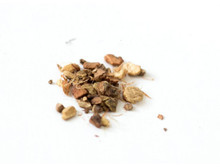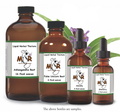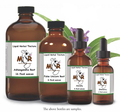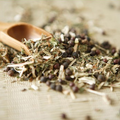 Loading... Please wait...
Loading... Please wait...- Home
- Herbal Teas
- Medicinal Remedy Teas
- Rheumatoid Arthritis Herbal Tea
Rheumatoid Arthritis Herbal Tea
Product Description
Rheumatoid Arthritis Herbal Tea
Rheumatoid arthritis (RA) is a chronic, autoimmune disease that affects one or more small joints of the hands, wrists, and feet. Flare-ups come and go, and the disease and worsening symptoms progress over time. As the disease progresses, pain, stiffness, and swollen joints intensify, often making mobility and daily life difficult.
With no known cause and no cure, treatments focus on reducing flare-ups, managing symptoms, improving flexibility, and slowing the progression of the disease. Various medications, including anti-inflammatories and corticosteroids, help relieve joint pain and reduce inflammation associated with RA.
But more people are turning towards natural remedies, including simple lifestyle changes such as eating foods with anti-inflammatory properties, getting adequate sleep, practicing relaxation techniques, and exercising regularly. In addition, complimentary therapies, such as topical creams, fish oil supplements, and certain plant oils are being used to provide temporary pain relief and ease stiffness and inflammation.
1. Boswellia (Boswellia serrata) a native to India and Pakistan, the scrubby tree Boswellia serrata possesses a long history of medicinal use as an anti-inflammatory. Also known as Indian frankincense, the bark produces a sticky resin found to contain anti-inflammatory properties. Boswellic acids are thought to interfere with leukotrienes, which cause inflammation in the body.
2. Devil's Claw Root a native to the Kalahari Desert, devil’s claw’s long tuberous roots have been used in traditional African medicine for centuries to treat multiple ailments, including digestive disorders and infections. German agricultural engineer G.H. Menhert is credited with bringing the herbal remedy to Europe during World War I. Root extracts of the plant contain the iridoid glycoside, harpagoside, which has been found to be an effective treatment of RA, OA, and tendonitis (RBG, Kew). Studied in Europe, it showed substantial pain-relieving properties with minimal side effects.
3. Turmeric (Curcuma longa): Turmeric is an extremely effective anti-inflammatory herb, and thus an effective pain reliever. It contains at least two chemicals (curcumin and curcuminoids) which decrease inflammation (and are very much like the oft-prescribed non-steroidal anti-inflammatory drugs, or NSAIDs). Incidentally, this anti-inflammatory effect is also why turmeric is often recommended for treatment of cancer, cataracts and Alzheimer’s.
Turmeric’s benefits are largely pinned to curcumin, a potent antioxidant that dramatically reduces inflammation (while also giving the spice its vibrant yellow color). Curcumin inhibits the growth of tumor cells in a variety of cancers and improves insulin resistance in subjects with altered metabolic function.
Turmeric contains two dozen other anti-inflammatory compounds, including six different COX-2 inhibitors (the COX-2 enzyme speeds up the formation of substances that cause inflammation and pain, and causes tumor cells to grow.
Turmeric also blocks the formation of the beta-amyloid plaques that cause Alzheimer’s disease, in part by turning off the NF-kappa B family of molecules that trigger inflammatory proteins uncontrollably during stress
4. Ginger used in Asian medicine for centuries, ginger has been shown to have anti-inflammatory properties similar to ibuprofen and COX-2 inhibitors. Ginger also suppresses leukotrienes (inflammatory molecules) and switches off certain inflammatory genes, making it potentially more effective than conventional pain relievers.
The potent antioxidant 6-gingerol inhibits production of the free radical peroxynitrite that causes inflammation and pain. (Overgrowth of gut bacteria is linked with excessive peroxynitrite.) As a group these ginger compounds act like non-steroidal anti-inflammatory drugs (NSAIDS) (e.g., ibuprofen, Aleve, Celebrex) used widely in this country to relieve arthritis pain. But why turn to drugs when ginger blocks the pain-causing chemicals associated with arthritis? Systematic reviews of clinical trials confirm the effect of ginger in relieving osteoarthritic pain.
5. Cats Claw is an anti-inflammatory that inhibits tumor necrosis factor (TNF), a target of powerful RA drugs. It also contains compounds that may benefit the immune system.
6. Cinnamon’s claim to fame is its ability to lower blood sugar in diabetics by activating insulin receptors. Like many other herbs and spices, cinnamon also has a host of compounds with antioxidant and anti-inflammatory properties that can lessen the likelihood of cellular damage and chronic disease.
Cinnamaldehyde inhibits the NF-kappaB proteins, transcription factors for pro-inflammatory genes and genes involved in immune, growth, and cell death responses, and it prevents blood platelets from clumping – all of which protect against heart disease, among other diseases of inflammation. Cinnamon also blocks growth factors associated with abnormal cell growth, thus protecting against cancer.
Ingredients: Frankinsense, Devil's Claw Root, turmeric, Ginger Root, Cats Claw, and Cinnamon.
Instructions: Maus recommends that you heat fresh water to a rolling boil, then pour water over tea and steep for 5-7 minutes if using a tea bag or full-leaf. 3-4 times a day is recommended if not using tincture.
Disclaimer - The information presented herein by Mountain Maus’ Remedies is intended for educational purposes only. These statements have not been evaluated by the FDA and are not intended to diagnose, cure, treat or prevent disease. Individual results may vary, and before using any supplements, it is always advisable to consult with your own health care provider.
Find Similar Products by Category

Product Reviews
-
arthritis tea

Posted by jacque hoveland on 17th Dec 2017
Love this tea! Has helped my pain so much morning and night. the flavor is pleasant not like some other teas from other places I've bought that taste 20yrs old. Overall, I'm soooo happy to have found your store! Excellent quality, great prices and lots of good info. Thank You !
-
pain relief

Posted by yolanda on 20th Oct 2016
Having arthritis in my hands I found this tea to bring pain relief. I started off with one teaspoon of the tea per cup of water and try to drink two cups a day . Am new on using herbs and amazed that this tea works.
-
Made a big difference in my pain levels

Posted by Story J. on 17th Nov 2015
Been using this tea in conjunction with the tincture and it really works! I was truly amazed that after 4 days I started to notice a big difference in the pain level in my knee and elbow joints. I have been doing the tea in the morning, tincture at noon (after lunch) then drinking a tea for late afternoon and before I go to bed. It has really made a difference for me.














